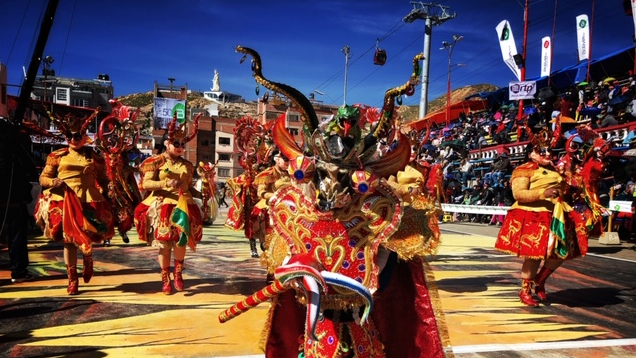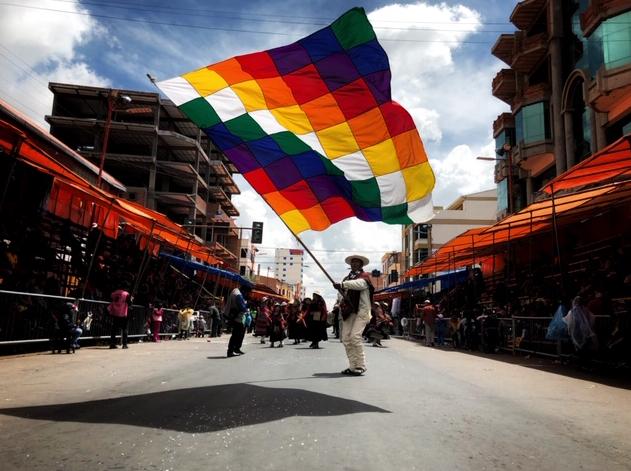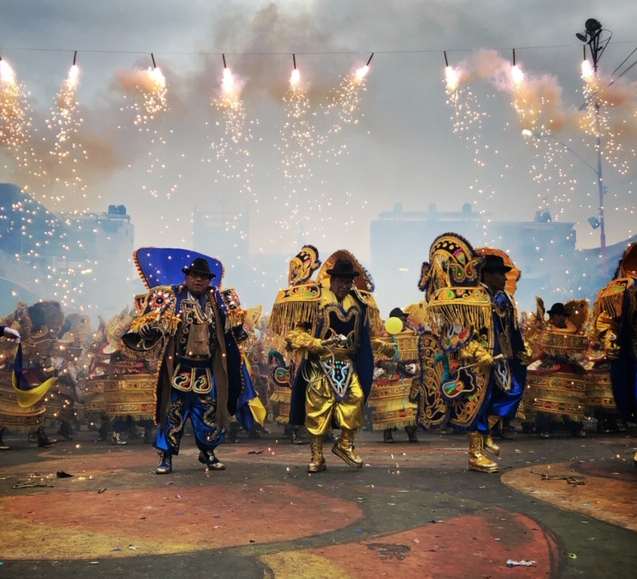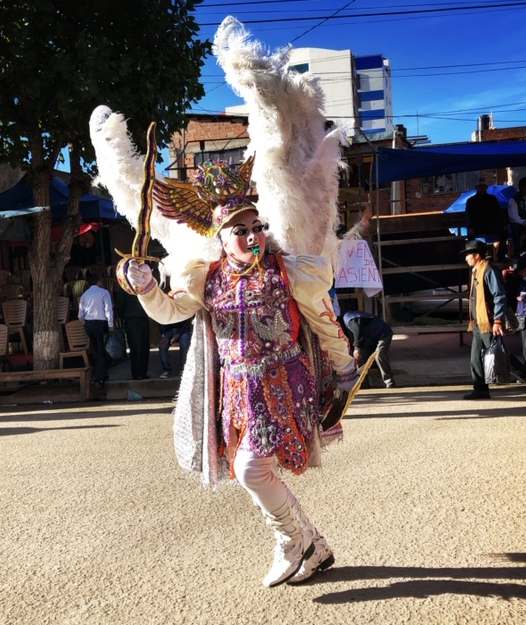
Culture
08:07, 05-Mar-2019
Carnival high up in the mountains
By Joel Richards

At over 3,700m altitude, the city of Oruro hosts one of Latin America's most spectacular carnivals.
"Carnival has its origins in Europe," said Rolando Barrientos, president of the dance group Morenada Central de Cocani which was founded in 1924. "But in Oruro we have different undertones."
The extravagant costumes and outlandish masks march through the city to the beat of large bands.

Morenada dance, Oruro, Bolivia. /CGTN
Morenada dance, Oruro, Bolivia. /CGTN
Oruro was founded by Spanish colonial rule in the 17th century, but before that it was a sacred site for indigenous people. “The Spanish arrived and saw there was a sacred site, where the temple is now,' explains historian Fabrizio Cazorla. ‘The Spaniards destroyed that and in its place built a chapel. That mixed the cultures.'
The traditional indigenous festival was transformed into a Christian carnival, the Andean gods hidden as Christian representations. The legend of the Virgin who appeared at the mineshaft became the patron of this city.

Man waves whiphala flag, which symbolizes Andean pro-indigenous movements. Oruro Carnival, Bolivia. /CGTN Photo
Man waves whiphala flag, which symbolizes Andean pro-indigenous movements. Oruro Carnival, Bolivia. /CGTN Photo
Oruro was a major mining area in the nineteenth and twentieth centuries as the hills that surround the city were full of tin, copper and silver.
Now it is commerce and tourism - in particular, the carnival - that mostly drive the local economy.
The Diablada is one of the Carnival's most famous dances. It means the Dance of the Devils. ‘Through the Diablada and our dance we express and represent what is the struggle between good and evil,' says Jony Lopez who leads one of the troops in the Diablada.

Jony López leading the Diablada, dressed as the Archangel San Miguel. /CGTN Photo
Jony López leading the Diablada, dressed as the Archangel San Miguel. /CGTN Photo
The dancers march along the carnival route until they reach the Church where they kneel before the Virgin del Socavón, in a display of their devotion and as thanks for the Virgin looking over them.
With its mix of Andean indigenous rituals in this carnival, the Oruro carnival is unlike any other in Latin America. Though like most other carnivals, so too here the festivities last well into the night.

SITEMAP
Copyright © 2018 CGTN. Beijing ICP prepared NO.16065310-3
Copyright © 2018 CGTN. Beijing ICP prepared NO.16065310-3